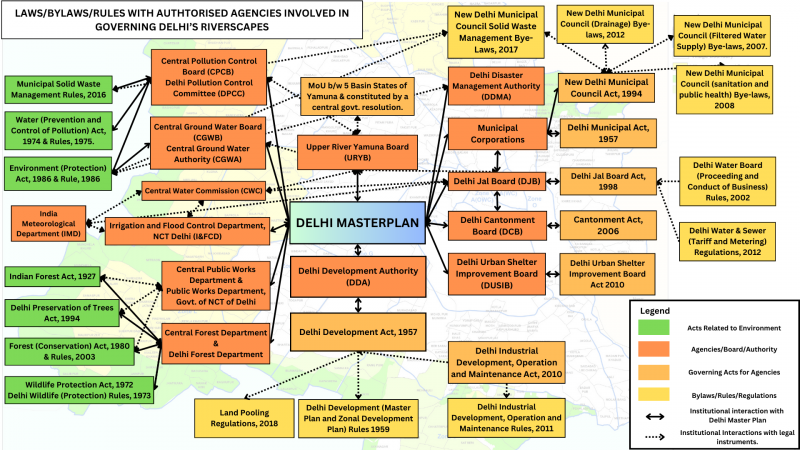CPR Insights: Locating Water-centric Urban Planning and Governance

What do we mean by water-centric urban planning and governance? Urban water security challenges are no longer merely about access to water, but also coping with floods, water quality and other climate change induced risks. For some time, there has been a recognition that statutory urban planning needs to be re-imagined and that existing town and country planning (T&CP) laws and practices need to be reconsidered to address some of these complex challenges. The latter imperative has been further bolstered by NITI Aayog, which recommended forming an apex committee at the state level to undertake review of the existing T&CP laws and other relevant urban development legislation. In continuation, Ministry of Housing and Urban Affairs (MoHUA) and its recent High-Level Committee (HLC) on Urban Planning have acknowledged that the current laws are inadequate, and there is a need for reconsidering the urban planning laws, frameworks, and practices to address contemporary needs and emerging risks.
As a first step to addressing this, in this blog, we have attempted to locate the statutory urban planning instrument, the Master Plan, in the broader legal and institutional ecosystem of water governance. Given the attention Delhi’s water has received this summer, and with the flooding season upon us, we take up the case of Delhi Master Plan. In the diagram, we have mapped the relevant legal and institutional ecosystem of the Master Plan to get a sense of the complexity involved in pursuing water-centric urban planning in Delhi. The schematic diagram above reveals the multiple interactions and interlinkages of the Delhi Master Plan with other laws and institutions. This may not be exhaustive but provides an idea of what it means to pursue a water-centric Master Plan. Clearly, water-centric plans cannot be prepared in isolation, but must consider various laws, institutions operating at different scales, and varying authority.
For example, urban flood management involves complex coordination mechanisms between the India Meteorological Department (IMD) and the Central Water Commission — federal bodies; the DDA — an autonomous body under the jurisdiction of the central government; the Upper Yamuna River Board (UYRB) — an inter-state agency; the Irrigation and Flood Control Department (IFCD) and the Delhi Jal Board — both of which are under the government of the NCT Delhi; and finally the Municipal Corporation at the local level. These institutions are guided by different legislation and functional mandates; together, they determine Delhi’s response and subsequent outcomes during flood incidences. You can locate most of these institutions in the above diagram.
The key takeaway is that to strengthen water-centric urban planning, we need statutory Master Plans that take into account multiple multiscalar institutions and legal frameworks. How can we move towards this?
This blog is part of an ongoing project on Rejuvenating India’s Rivers, in collaboration with the National Mission for Clean Ganga (NMCG).


